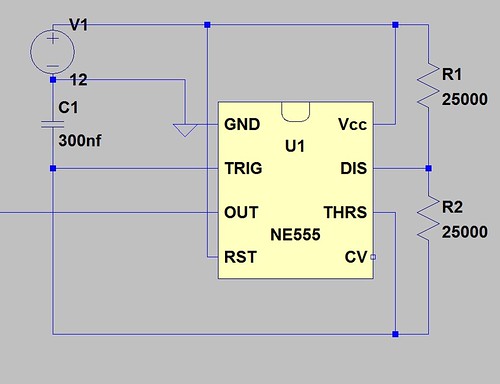Re: 20 pulses and circuit goes LOW state, what determines the number of pulses
Calm down...
Firstly, we must apply external components to this 555 device, so that it succeed oscillating.
Find bellow a circuit already referred on another thread at this forum.

Square Wave by Jason Milich, on Flickr
After you understand this ( oscillator ) circuit, we will gather with another ( monostable ).
But, for now I must certify if remain some doubt up to here.
+++
...What circuit can i put on the output of the 555 timer to counter the pulses and to shut off after 20 pulses?
Calm down...
Firstly, we must apply external components to this 555 device, so that it succeed oscillating.
Find bellow a circuit already referred on another thread at this forum.

Square Wave by Jason Milich, on Flickr
After you understand this ( oscillator ) circuit, we will gather with another ( monostable ).
But, for now I must certify if remain some doubt up to here.
+++